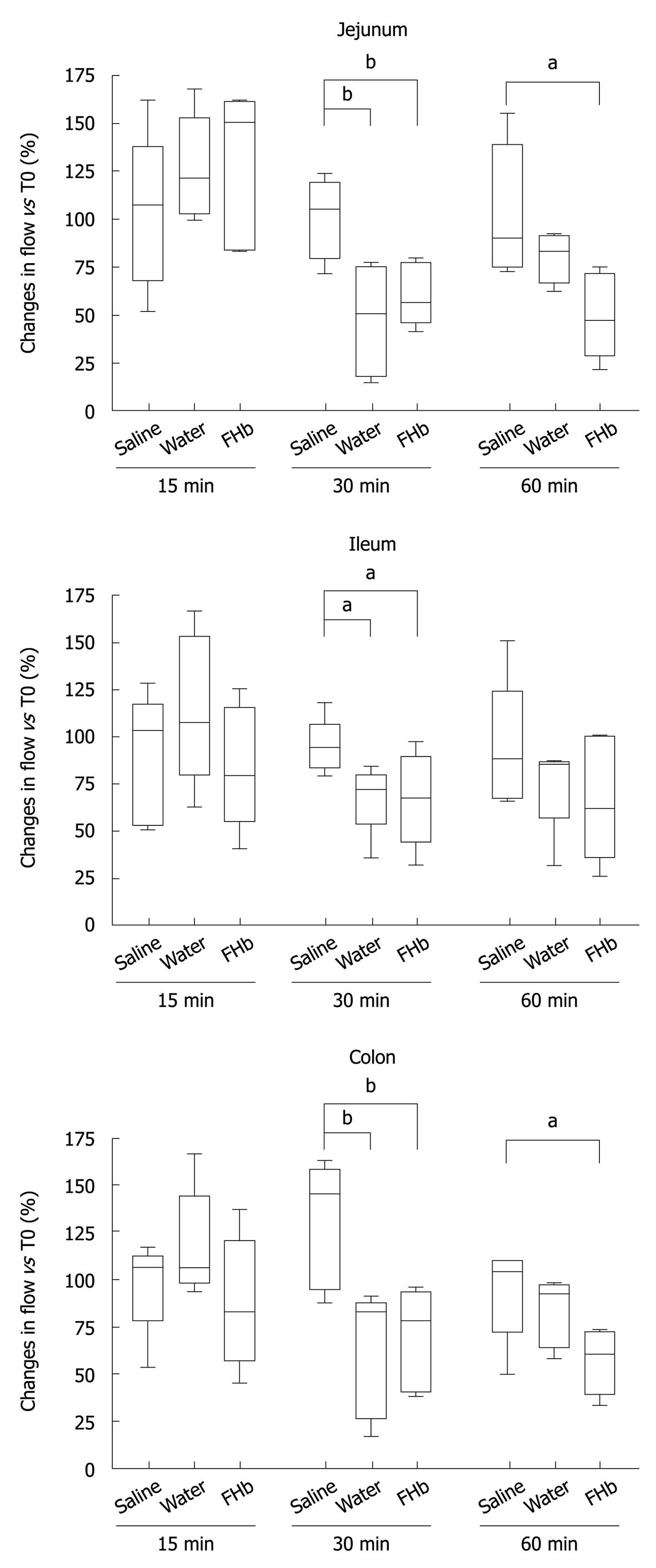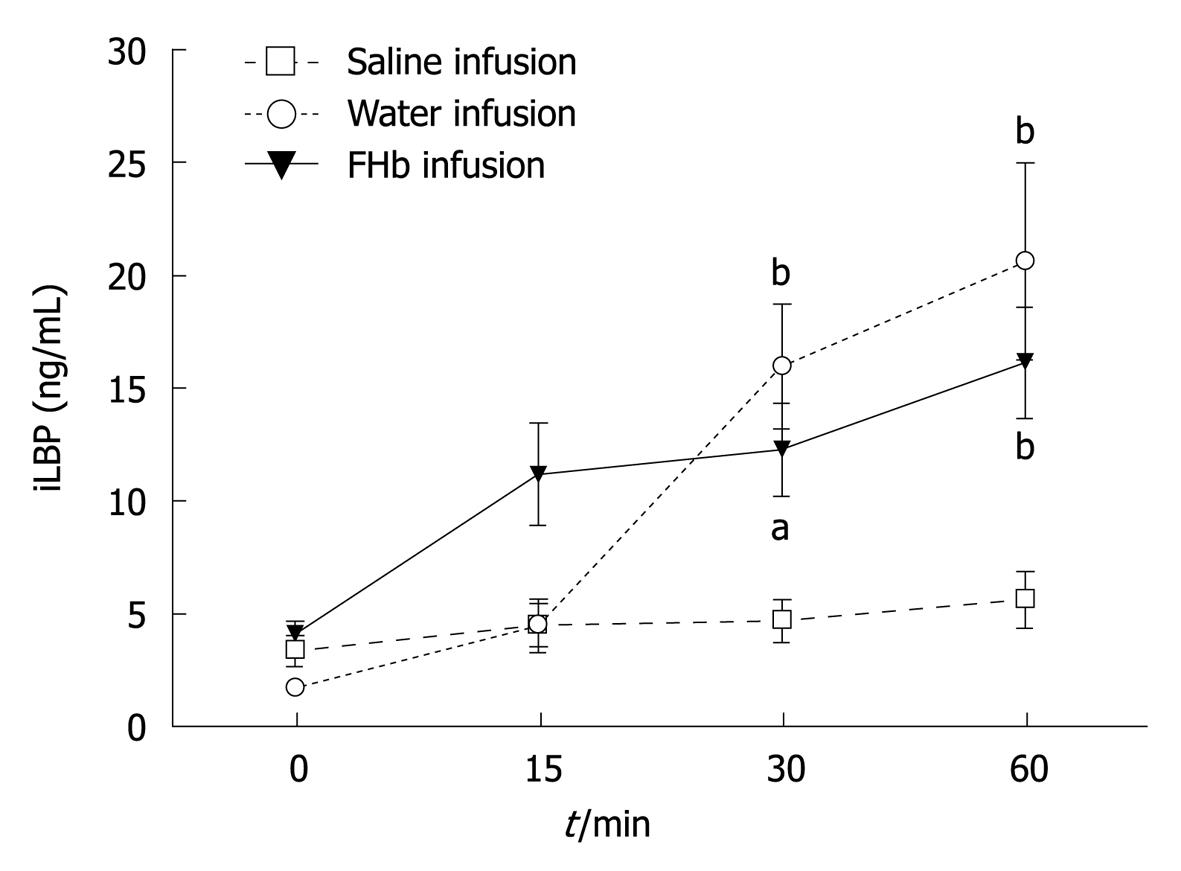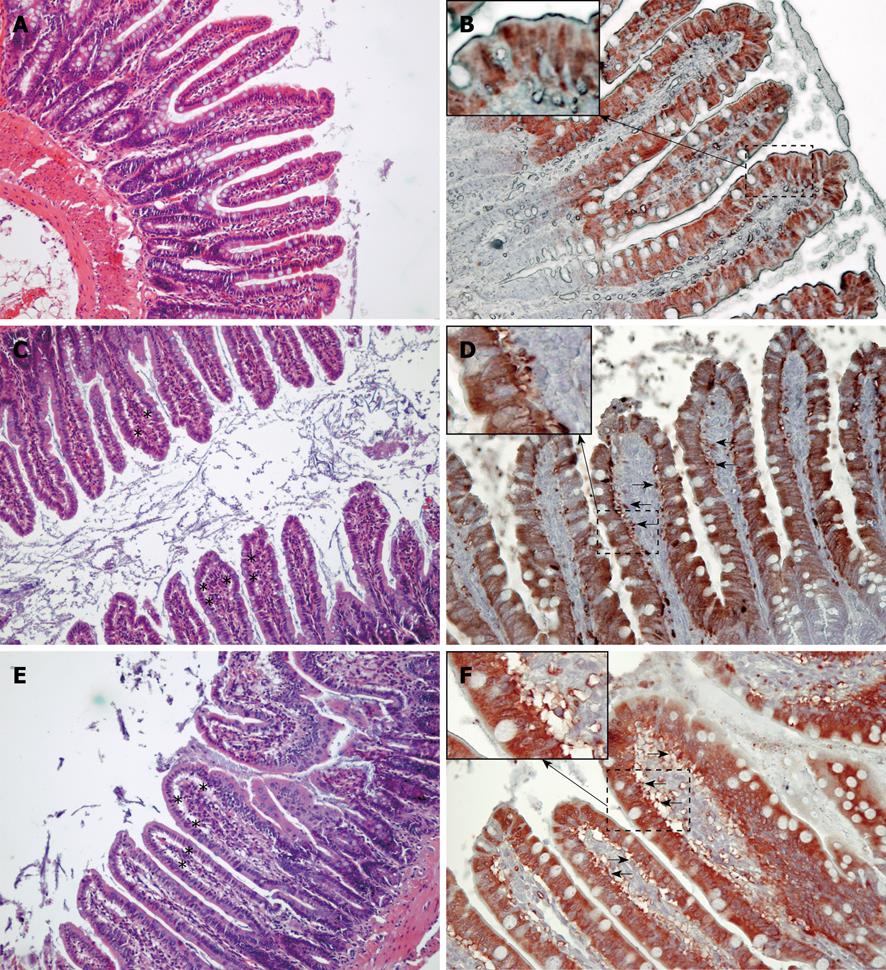Copyright
©2011 Baishideng Publishing Group Co.
World J Gastroenterol. Jan 14, 2011; 17(2): 213-218
Published online Jan 14, 2011. doi: 10.3748/wjg.v17.i2.213
Published online Jan 14, 2011. doi: 10.3748/wjg.v17.i2.213
Figure 1 The effect of saline, water or free oxyhemoglobin infusion on mean arterial pressure and free oxyhemoglobin levels.
During the study period the mean arterial pressure (MAP) (left Y-axis) remained unchanged in all interventional groups. Plasma free oxyhemoglobin (FHb) levels (right Y-axis) were significantly elevated in the group with water infusion and in the group with FHb infusion after 15 min and onwards. bP < 0.01, dP < 0.001.
Figure 2 Decreased intestinal microcirculatory blood flow after water and free oxyhemoglobin infusion.
The gut was divided into three sections: jejunum, ileum and colon. Basal flow was set at 100% for all groups at T0. In both the water infusion group as well as in the free oxyhemoglobin (FHb) infusion group the microcirculation decreased. After infusion of saline, the microcirculatory blood flow remained around 100% throughout the study. Changes in time in microcirculatory blood flow are presented at T15, T30 and T60 and compared with the saline infusion group. aP < 0.05, bP < 0.01.
Figure 3 Hemolysis is associated with intestinal injury.
The infusion of water and free oxyhemoglobin (FHb) led to a rapid and significant release of ileal lipid binding protein (iLBP), a cytosolic protein mainly present in the ileum and expressed in mature enterocytes. aP < 0.05, bP < 0.001.
Figure 4 Histological and immunohistochemical evaluation of intestinal injury.
Histological evaluation of the ileum was performed using HE staining (A, C and E, × 100). When compared to the saline group (A, B), water (C, D) and free oxyhemoglobin (FHb) (E, F) infusions led to the development of subepithelial spaces (asterisks) in the villi. In support of the findings of plasmatic release of ileal lipid binding protein (iLBP), immunohistochemical analysis of the ileum shows cytosolic staining for iLBP in the epithelial cells of the upper part of the villi (B, × 200). Leaking of iLBP in the subepithelial spaces (arrows) indicates intestinal epithelial cell injury after water or FHb infusion (D, F, × 200). Insets show 400 × magnification of selected areas where staining of iLBP can be seen outside the intestinal epithelial cellular membrane, indicating epithelial cellular injury (D, F).
- Citation: Hanssen SJ, Lubbers T, Hodin CM, Prinzen FW, Buurman WA, Jacobs MJ. Hemolysis results in impaired intestinal microcirculation and intestinal epithelial cell injury. World J Gastroenterol 2011; 17(2): 213-218
- URL: https://www.wjgnet.com/1007-9327/full/v17/i2/213.htm
- DOI: https://dx.doi.org/10.3748/wjg.v17.i2.213












